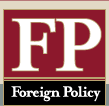
Foreign Policy
Spring 1998
Sidebar: A Brief History of Panic
By Jeffrey Sachs
One key risk of open capital flows is the pattern of booms and busts in international lending that contribute to instabilities in both creditor and debtor nations. In the 1820s, just after Latin American independence, British capital markets poured large sums into Latin American bonds and investment schemes. These crashed a few years later, giving the world its first developing-country debt crisis of modern times. The cycle of euphoric capital inflows, followed by “revulsion” and sudden outflows, has repeated itself every generation or so, including the defaults by U.S. states on British loans in the 1830s; the crisis of Egyptian and Ottoman debts in the 1870s; the defaulted loans to Caribbean countries in the early twentieth century; the worldwide defaults of the Great Depression; the developing-country debt crisis of the early 1980s; the Mexican crash of 1994; and now the East Asian financial crisis.
Crashes can occur when capital markets are exposed to “multiple equilibria,” in which fears of bad outcomes can prove self-fulfilling. The scenario is similar to shouting “fire” in a theater. A small fire may pose no disaster if patrons quietly, calmly, and resolutely leave a crowded theater. But the same small fire may lead to disaster if patrons panic and trample one another to be the first ones out. Thus, if a debtor starts to weaken, a panicked withdrawal of short-term loans by nervous creditors can immediately lead to illiquidity of the debtor and then to bankruptcy, even if the debtor is fundamentally sound. Both the debtor and creditors lose by a creditor panic, as it produces a pure loss of market value.
A useful response to a panic is the provision of liquid funds to the afflicted debtor by a “lender of last resort.” In a domestic banking panic, the lender of last resort is typically the central bank. In an international context, however, the debtor’s central bank usually cannot be an adequate lender of last resort since the credits being withdrawn are in foreign currency. If the central bank’s foreign exchange reserves are scarce (a fact that often helps to trigger the panic), then some kind of international lender of last resort might be needed—either a major creditor government—such as the United States in the case of the Mexican crisis—or an international lender of last resort—such as the imf in the case of East Asia. The role of the imf and other lending institutions continues to generate enormous debate. What should be the terms of “bailout loans?” What conditions should be attached to IMF programs? Should market forces be allowed to take their toll so that problems of moral hazard are avoided, as when bailouts lead to more irresponsible lending in the future? These issues sit at the center of the public policy debate on how to handle the Asian crisis.
—J.S.